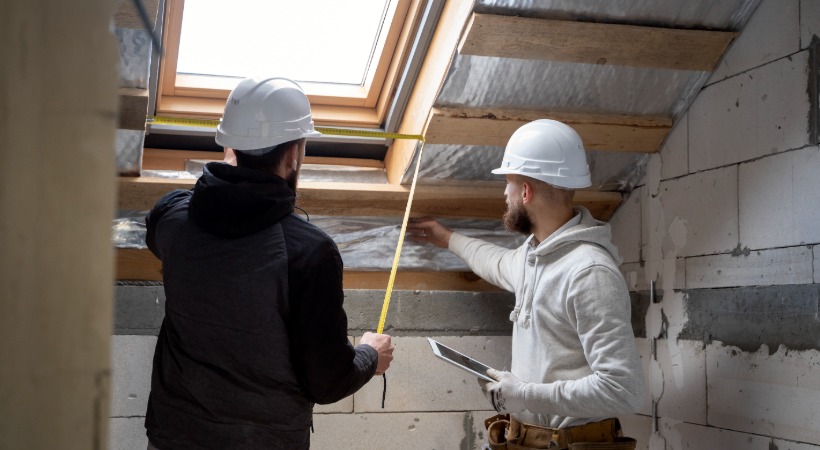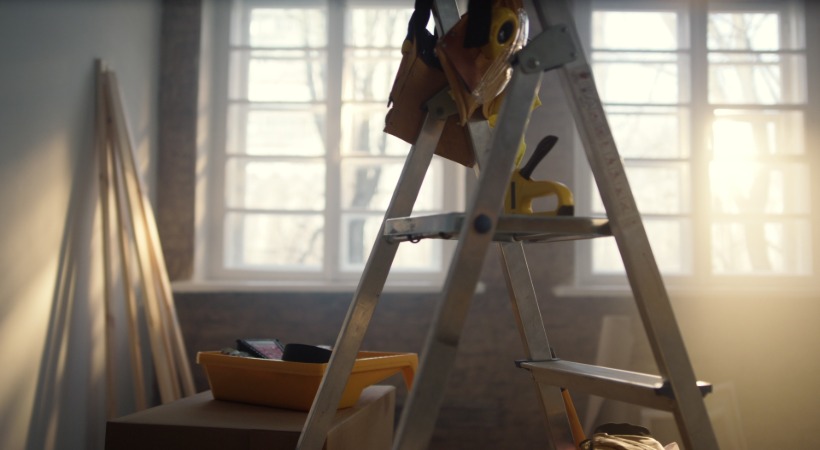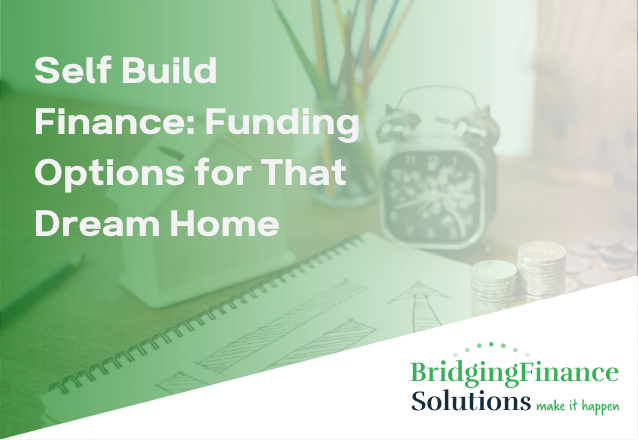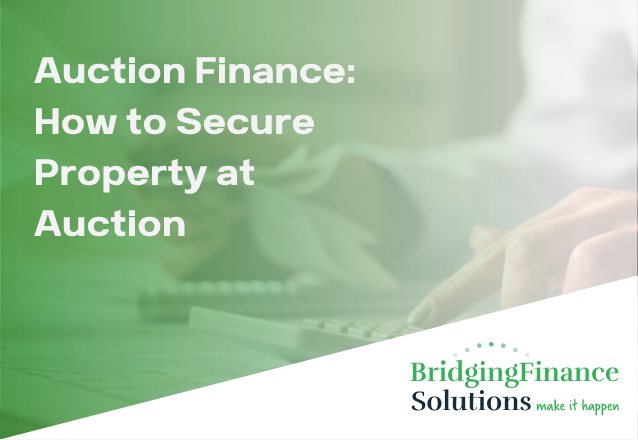As a homeowner, it is not uncommon for you to consider all of the ways that you can transform your property. We all have visions of outdoor bars, mancaves and extensive interiors, but some plans are more attainable than others.
Many homeowners find that they outgrow their current properties. As time goes on and your family expands, it may become apparent that more space is needed.
If you’re a homeowner wanting to add more space to your home, or you’re an investor looking to increase the value of a property, you may consider expansion through a loft or barn conversion. When completing these developments, homeowners may require home improvement loans.
If you lack the immediate funds for these conversions, you may need specialised financing options like bridging loans, development finance, or refurbishment loans to promptly support these projects.
In this guide, we will explore the advantages of loft and barn conversions while also advising you on the types of financing available and all the factors to consider in your conversion journey from our expert standpoint at Bridging Finance Solutions.
Why Carry Out a Barn or Loft Conversion?

There are a number of motivations behind why someone might carry out a barn or loft conversions, these include:
Increased Property Value
If you are a property developer or you are just looking to increase the value of your current home, these conversions may be the solution for you.
Conversions can enhance your property value by adding more usable space, while also introducing character to your home and increasing the overall appeal of the property, especially in areas where locating homes with space can be challenging.
Though you may need to invest further time into understanding how to finance a loft conversion, the potential returns on your investment make it well worth it, as a converted barn or loft can boost the value of your property by 20-30%.
Extending Your Living Space
As we briefly mentioned, it can be easy to outgrow a property, particularly as your family expands. If you have invested considerable time and money into making the property your home, the last thing you want is to move on to a larger property.
By extending your current living space, you can really make the most of your property and hold onto it for longer. This ensures that you can avoid any additional moving costs that will be required if you need to move to a larger property.
Attract Buyers and Tenants
As a landlord or property investor, you will understand the importance of ensuring that your property is marketable to potential tenants or buyers.
One way to make your property considerably more attractive is through loft and barn conversions, which add an extra element that makes it more attractive to buyers or potential tenants.
More Sustainable Solution
The world is taking a step towards a more sustainable future, and this does not stop at property development. Many people find that their current property or the properties available in the local area are not fit for their needs.
In these instances, homeowners may turn to property development and build a whole new structure. Not only does this require obtaining development finance, but it is also unsustainable.
Reusing old structures through conversions is more eco-friendly and reduces waste and energy consumption, making it a much more sustainable solution. We have 676,000 empty properties in the UK alone, all with development potential, while over 120,000 new builds were still developed in the last year.
There is certainly reason to encourage more people to improve their properties rather than buy another entirely.
Costs to Consider for a Barn or Loft Conversion

Now, by no means are we stating that barn and loft conversions are cheap endeavours, as there are still associated costs. To further develop your understanding of the process, here are some costs you must consider.
Typical Costs for a Barn Conversion
When completing a barn conversion, you can expect to pay the following costs;
- Planning & Permits – £2,000 – £5,000
- Structural Work – £50,000 – £150,000+
- Roofing & Insulation – £20,000 – £40,000
- Windows & Doors – £10,000 – £30,000
- Plumbing & Electrical – £15,000 – £50,000
Total estimated cost: £100,000 – £400,000+
As you can see from the cost estimation, completing a barn conversion can be costly depending on the size of the barn, which is why so many people choose to use property conversion finance to carry out the project.
Costs for a Loft Conversion
When financing a loft conversion, you can expect the following costs;
- Basic Loft Conversion – £20,000 – £30,000
- Dormer Loft Conversion – £30,000 – £50,000
- Mansard Loft Conversion – £50,000 – £80,000
- Hip-to-Gable Loft Conversion – £40,000 – £70,000
Total estimated cost: £20,000 – £80,000.
When converting a loft, the type of conversion that you are looking to complete can have a huge influence on the cost of your conversion.
If you are looking for the most cost effective solution between the two, you might want to consider loft conversion.
Which Loans Are Best For Barn and Loft Conversions?

If you are set on carrying out a conversion, you may be considering how to finance the endeavour. The following three options are arguably the best solutions for financing loft and barn conversions.
Bridging Loans for Barn and Loft Conversions
A bridging loan is a short-term financing option intended to cover the period between starting a conversion and either securing long-term financing or selling the property.
This may be the best option if the project has a quick turnaround and finance is required quickly. At Bridging Finance Solutions, we have helped developers get the cash they need in a matter of days, so if you are a developer in need of a quick cash injection, we can help.
If you have applied for a traditional mortgage for your property to support conversion and the process has been delayed, we can give you the financial support you need.
Want to learn more about bridging loans? Take a look at our dedicated bridging loan FAQ guide.
Terms of a Bridging Loan
Bridging loans usually provide a Loan-to-Value (LTV) ratio of 65-75%, allowing borrowers to obtain funding determined by a percentage of their property’s value. Interest rates typically fall between 0.5% and 1.5% per month, highlighting the short-term nature and adaptability of this financing option.
Typically, the loan term ranges from 6 to 12 months, allowing borrowers sufficient time to either refinance or finalise their property transaction before repayment loan.
If you are not familiar with some of the terminology associated with bridging loans, take a look at our term glossary to become better acquainted.
Development Finance for Barn Conversions
When considering a significant conversion project that involves considerable work, such as a barn conversion, property development finance can be an excellent option to explore. This type of financing is specifically designed to support large-scale renovations and developments, providing the necessary funds to help bring your project to completion.
Terms of Development Finance
Barn conversion financing usually consists of a loan designed to facilitate staged payments during the project, ensuring that money is accessible as work proceeds. Interest rates typically fall between 5-12% annually, influenced by aspects like the size of the loan and the borrower’s profile.
Repayment is typically due when the loan ends, and many borrowers choose to refinance it into a mortgage to extend the repayment period term.
Refurbishment Bridging Loans for Loft Conversions
For smaller renovation tasks like transforming a loft into a bedroom, a refurbishment bridging loan offers an affordable means to finance expenses. This loan serves as a great solution, as you can receive smaller loans that cover the whole expenses, but you do then have to worry about a lack of flexibility.
Terms of Refurbishment Loans
Refurbishment loans usually finance up to 100% of the renovation expenses, delivering crucial funds for property enhancements. Interest rates vary between 0.75% and 1.5% monthly, based on the loan terms and the borrower’s profile.
Repayment is flexible, with the loan usually settled once the property is refinanced or sold, making it a suitable option for investors and developers looking to add value to a property.
How to Qualify For Home Improvement Loans

Before being able to secure property finance, you need to meet certain eligibility criteria. These criteria include;
Eligibility Criteria
To be eligible for a refurbishment loan, you’ll need a clear exit strategy outlining how you plan to repay the loan, whether through refinancing or a property sale.
Strong credit and financial stability are also crucial, as a solid credit score increases your chances of approval. Lenders will require detailed project plans, including a breakdown of costs and any necessary planning permissions, before providing funding.
Before any agreements are made, a professional property valuation is essential to determine the property’s worth and support your loan application.
In short, you’ll need:
- A clear exit strategy.
- Strong credit and financial stability.
- Detailed project plans and planning permission.
- A professional valuation of the property.
If you meet this criteria, you may be eligible for development finance.
Choosing The Right Lender For Your Project
It is important to compare lenders before making any commitments to a lender. If you’re considering getting a bridging loan, development finance, or refurbishment loan, it’s important to compare lenders to find the best rates for you.
What to look out for;
- Competitive interest rates.
- High LTV options.
- Fast approval process.
- Experience with barn and loft conversions.
When considering your financial options, you should keep those factors in mind.
Make it Happen With BFS

Whether you’re a homeowner seeking extra space or a developer transforming a barn into a luxury residence, specialised financing options such as bridging loans, development finance, and refurbishment loans can help bring your project to life.
If you want a fast and flexible financing solution, we strongly recommend taking out a bridging loan with Bridging Finance Solutions. Contact our team to find out how we can help you.
Make it happen with BFS.





